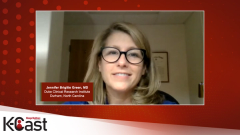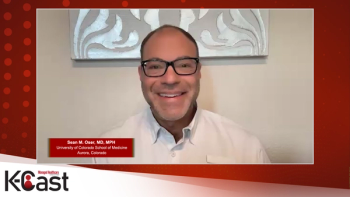
Managing Type 2 Diabetes With Fixed-Ratio Combinations
Rodolfo J. Galindo, MD, provides insight on the benefit of fixed-ratio combinations of basal insulin and GLP1 agonists for the optimal management of type 2 diabetes.
Episodes in this series

Rodolfo J. Galindo, MD:This topic is very interesting, and I was really involved and interested since the beginning from a scientific perspective. Our population of patients with type 2 is expanding. We have many patients, and unfortunately many don’t achieve like glycemic targets. We’ve known for many years that if you improve glycemic targets—in this case, hemoglobin A1C [glycated hemoglobin]—you can prevent diabetes-related complications. One important measure is to improve diabetes and prevent diabetes complications by reducing hemoglobin A1C, and we have proof that we can reduce it.
I’m a clinician, so I see patients. For my clinical practice, I’m always interested in finding simpler ways to manage diabetes because our patient has a big burden of care. It’s not just diabetes. They have other conditions, other chronic diseases, and diabetes itself imposes a big burden on our patients. From a scientific perspective, I was very interested in the medication itself because it combined 2 agents that are complementary. But from a clinician standpoint and as a patient advocate—I also work a lot on patient advocacy—it was very interesting because a patient was going to have a simpler option to control the diabetes.
What does a fixed-ratio combination of basal insulin and GLP1 agonist mean? It’s a combination of basal insulin and 1 of the GLP1 agonists. One is iGlarLixi [insulin glargine, lixisenatide], which combines insulin glargine, which is well known and has been used for many years. It has a lot of data supporting their efficacy and safety. The short-acting GLP1 lixisenatide also has a strong safety and efficacy validating data. The second agent is called IDegLira [insulin degludec, liraglutide], which combines insulin degludec and a GLP1 agonist, liraglutide. Both agents have strong supporting programs in which the studies prove their safety and efficacy.
Why combine basal insulin and GLP1? Basal insulin acts primarily by reducing fasting plasma glucose. It suppresses that endogenous glucose production, which happens uncontrolled in patients with type 2 diabetes. You get that result early in the morning—when the patient wakes up fasting—that you have a reduction in the fasting plasma glucose. However, it doesn’t control the second portion of the A1C, which has the baseline hyperglycemia postprandial, so the glucose is elevated after a meal. Those 2 components elevate the A1C value. Basal insulin works only on the fasting plasma glucose. We usually need another agent to control meal-related hyperglycemic spikes. The spike in glucose after the patient eats usually happens 3 times a day, sometimes 4.
When the development of this medication was in place, they said, “This is great. You combine basal with GLP1 in 1 injection, simplify the treatment, and use in these 2 complementary actions.” One would suppress fasting plasma glucose, and the other would suppress postprandial glucose exposures or spikes. The short-acting lixisenatide works through that, but most of them delay gastric emptying, which is actually lixisenatide.
GLP1 agents also increase endogenously the insulin production that the pancreas can make. It helps the patient need less insulin because it’s acting in a way that the patient will produce insulin. More important, something that’s important in type 2 diabetes is suppression. The GLP1 agent decreases glucagon. Glucagon is the opposite of insulin; it raises glucose. It’s higher in patients with type 2 diabetes than in patients with no diabetes. It’s important that we control that, and we didn’t have that agent before. In summary, this combination of basal insulin and GLP1 suppresses fasting plasma glucose, stimulates the uptake—the use of this glucose that is circulating in the blood by the tissues—increases the insulin production by the pancreas, and decreases glucagon. It’s acting in many areas, but it also delays gastric emptying, which is very important in patients.
About 80% to 90% of our patients with type 2 diabetes have obesity or are overweight. They need to lose weight and it’s really hard. When your gastric emptying is delayed, you feel fullness early. That also sends a signal to the brain to suppress cravings and hunger. Also, it decreases the spike of the glucose after eating. It’s a really strong action. GLP1 works really well on that. By doing that, patients tend to lose weight. Insulin, on the other hand, makes patients gain weight.
These 2 agents provide many actions that you won’t get with 1 agent—some really important actions. Patient with type 2 diabetes are deficient. Many of our patients with type 2 diabetes have lung disease, so they need insulin at some point. That was interesting for us as scientists but also as clinicians, because our patients are asking for simplicity all the time. The simpler the regimen, the better their adherence on the therapy. GLP1s are really good, but we have strong data suggesting that 50% to 70% of patients have stopped taking their GLP1. When you combine with this agent, the thinking was that it will improve adherence. We’ll probably talk about that more later.
Transcript Edited for Clarity
Newsletter
Get the latest industry news, event updates, and more from Managed healthcare Executive.



















































